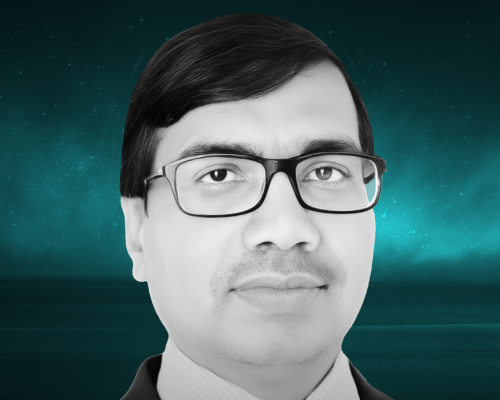Machine Learning at the Edge: Maximizing ROI Through Distributed Computing and Multi-Cloud Integration
Video size:
Abstract
Discover how leading organizations achieve 70% faster insights and 40% cost savings by strategically deploying ML across edge devices and multi-cloud environments. Learn practical frameworks for optimizing model placement and turning theoretical advantages into measurable ROI.
Transcript
This transcript was autogenerated. To make changes, submit a PR.
Hi Al. Welcome everyone to today's session.
My name is David Kumar, a and I have 20 plus years of experience
in information technology industry.
I'm currently working as a senior lead software engineer at Mini T Technologies,
where I lead software development projects and mentor a team of software
to deliver a scalable and innovative.
Before joining Minis sot I worked 15 years at IBM and three years
with the Toyota Consulting Services.
Throughout my career, I have constantly demonstrated strong problem solving
skills, a deep understanding of software architecture, and passion for
leveraging technology to drive business.
Today discussing.
How the convergence of edge computing machine learning and multi-cloud
strategies is reshaping the technological landscape and significantly
enhancing enterprise on investment.
This powerful intersection of technologies is enabling business
to process data closer to the source, derive real time insights.
Through intelligent algorithms and leverage the flexibility of
multi-cloud environments for optimized performance and cost efficiency.
Together, these innovations are not only driving operational agility
and scalability, but are also unlocking new revenue streams,
improving customer experiences and.
Data recommendations Making across the enterprise.
This session will highlight practical examples and believer strategies you can
implement across the following areas, the convergence of edge computing,
machine learning, business value of edge machine learning, few case
studies, healthcare, point of care, analytics, and manufacturing maintenance.
Workload placement at framework implementation challenges and
solutions, edge optimize remodel architectures, multi-cloud integration
strategies, implementation roadmap, key takeaways, and next steps.
The convergence of edge computing and machine learning.
That's taught by comparing traditional centralized machine learning with imaging
paradigm of edge machine learning.
Centralized cloud processing brings latency and bandwidth
concerns, edge computing processes.
Data closer to its sources on the device are at the edge.
Edge.
Machine learning further enables real time AI interference directly
on devices, multi-cloud support, flexibility, distributing workload.
Intelligently across infrastructure,
business value of edge machine learning.
The benefits of Edge machine learning are not just technical.
There are financial and operational.
We have seen up to 60% maintenance cost reductions, 85%.
From 300 plus milliseconds down to 14 milliseconds.
Most importantly, eight systems remain functional even when
disconnected from the cloud
case studies.
We have a few case studies we are going to discuss.
First case study.
I'm gonna discuss healthcare analytics, healthcare.
Patient data overwhelmed their network.
By deploying machine learning at the edge real time vital
processing become possible.
Lightweight models were used onsite and federated learning.
Ensure model improved without centralizing.
Since two data, this will lead to detection of critical events and.
We have another case study on manufacturing predictive maintenance.
In predictive in manufacturing.
Unplanned downtime is costly.
This manufacturing, this manufacture reduces maintenance cost by 60% with edge
based anomaly detection models run on local factory sensors, detecting issues.
Days before failure data from edge loop back into the cloud
to refine models over time.
Optional workload placement framework.
Not all workload should be on the edge.
This framework helps evaluate placement if your system does
not sub hundred milliseconds response time edges the answer.
Think about beta gravity.
Process it where it generate.
Consider privacy complaints and compute needs.
Often a hybrid model is ideal.
Lightweight models on the edge, heavy training on the cloud,
implementation challenges and solutions.
Machine learning deployment isn't without challenges.
We face
model update to logistic.
Security concerns solutions include automation learning that
adapts to hardware containerized deployment, and federated learning.
Use differential updates and version control to manage
model evaluation efficiently.
Edge optimiz model architectures edge devices need compact efficient models.
Techniques like quantization, proning, reduced size without closing the accuracy.
Use architecture search to find the right balance.
Federated learning that trying models across devices while
preserving data privacy.
Multi-cloud integration strategies.
A robust edge machine learning strategy requires a multi-cloud integration
is abstraction, leads to unify APAs and a wide vendor locking orchestrate
workload dynamically based on the realtime performance and costs
governance and devs pipelines ensure smooth deployments from the edge to.
Implementation roadmap.
Implementation begins with assessment, define goals, use cases and metrics,
build foundational tools and governance as you scale, automate optimization and
create culture of continuous improvement.
This roadmap ensures consistent consistency and sustainable.
Performance complaints, benefits.
It's the best approach as a distributed architecture.
Address technical hurdles with optimized models.
Robust governance.
Start with the high impact use case for the value and scale confident confidently.
Thank you.
Thank you for your engagement today.
I have invited you.
Change in your organization.
Once again, thank you all.

